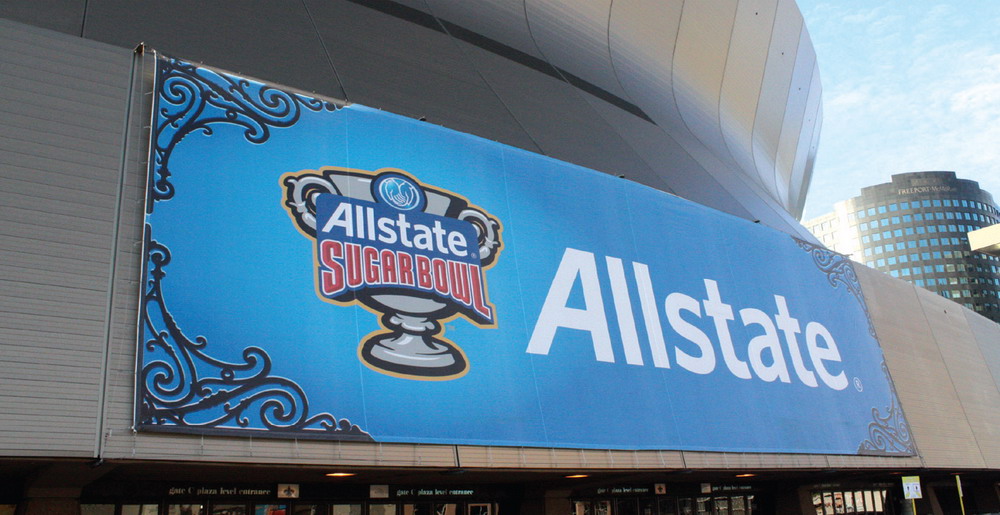After more than 25 years in business, Flying Colors (Berkeley, CA) has developed a reputation in producing banners and event graphics for big games. The company’s inkjet-printed, vinyl graphics have ranged from petite to supersized, and have bedecked Super Bowls, Pro Bowls and each edition of the NHL Winter Classic, pro hockey’s annual outdoor game (see ST, November 2010, page 60).
Flying Colors outfitted four of the five games in the Bowl Championship Series (BCS), for which the shop has worked since the BCS’ inception in 1996, and bedecked more than 40 bowl games. The job includes outfitting the Rose, Sugar, Fiesta and Orange Bowls, high-profile post-season games that culminate the major-college football season, as well as the Tostitos BC national-championship game, which took place in Glendale, AZ at University of Phoenix Stadium. Because that stadium hosted two contests – both the Fiesta Bowl and the championship game – rapid graphic changeovers were required.
This year’s treatments included exterior event graphics, field wall and fascia wraps, interior concourse banners and other treatments that encompassed the nearly 72,000 sq. ft. of graphics produced for each game. The company also outfitted the Sugar Bowl with approximately 30,000 sq. ft. of banners and soft-sided signage spread throughout the facility.
David Kerchman, Flying Color’s president, said the shop works directly for the bowl’s title sponsor, as well as the bowl’s host committee and various other sponsors and local entities. The artwork for each project is usually developed using Adobe Illustrator as vector art with 15- to 50MB files.
He said, “We develop our optimum treatment areas with two audiences in mind: those watching on TV, and spec-tators watching the game in person. We try to find the perfect balance for both. The field wall graphics are of paramount importance because they get the most TV exposure. Beyond that, we develop fascias and other large-scale, interior marquees and other ‘beauty shots.’ Our graphic components for the BCS games varied from 2 x 2 ft. to 45 x 200 ft.”
He continued, “Materials we use vary greatly, and are predicated on such factors as aesthetics, viewing distances, attachment hardware needed, storage, installation and budget. These projects are very broad in scope, and incorporate an array of polyesters, flexible-face media, mesh fabric, pressure-sensitive media and rigid material like Gatorboard® and Coroplast®. With so many substrates, an accurate color-management process is crucial.”
Advertisement
Flying Colors printed the BCS applications on an HP Scitex TurboJet 8300 with solvent-based inks, on a Mimaki JV-5 dye-sublimation printer with water-based inks for interior applications, and on a Durst Rho 500R UV-curable-ink printer for exterior applications. The environment where a print will be installed also influences the hardware used. For simple graphics, Kerchman said tie wraps and Velcro straps usually suffice, but for heavy or complex pieces, chain motors, box trusses and integrated cable and rigging systems prove necessary.



 Tip Sheet4 days ago
Tip Sheet4 days ago
 Business Management2 weeks ago
Business Management2 weeks ago
 Real Deal5 days ago
Real Deal5 days ago
 Women in Signs2 weeks ago
Women in Signs2 weeks ago
 Benchmarks2 days ago
Benchmarks2 days ago
 Editor's Note1 week ago
Editor's Note1 week ago
 Women in Signs5 days ago
Women in Signs5 days ago
 Line Time2 weeks ago
Line Time2 weeks ago









